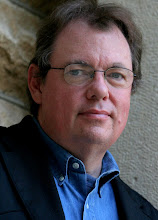Here's a pleasant note I received from Patsy Terrell:
Just wanted to let you know that I read "I, Quantrill" over the last few days and really enjoyed it. I don't think I've ever read a western before, but a good story is a good story. I know you've received numerous accolades for your work, and don't need to hear praise from me, but it was a fun read for me.
Of course, being from Kentucky and having spent a lot of time in the Joplin area and living in Kansas all this time, I could relate to lots of the locations. It was interesting to see a "Terrell" pop up on the same page as Stanford KY, where I spent some time. That was a fun surprise.
I really enjoyed Mary's story - a lovely, poetic twist.
You can find Patsy's blog
here.
 I seem to be blogging a lot, probably to keep from writing. Well, here's something I've been meaning to post for a while now -- Pedestrian Comics by Dan Spees. It's an autobiographical take on his life teaching community college at Hutchinson, Kansas. I particularly like the panels where he is sent to teach composition at a local Catholic school.
I seem to be blogging a lot, probably to keep from writing. Well, here's something I've been meaning to post for a while now -- Pedestrian Comics by Dan Spees. It's an autobiographical take on his life teaching community college at Hutchinson, Kansas. I particularly like the panels where he is sent to teach composition at a local Catholic school.





